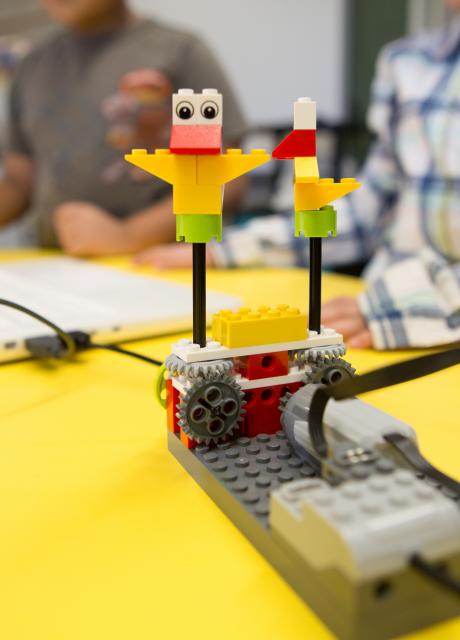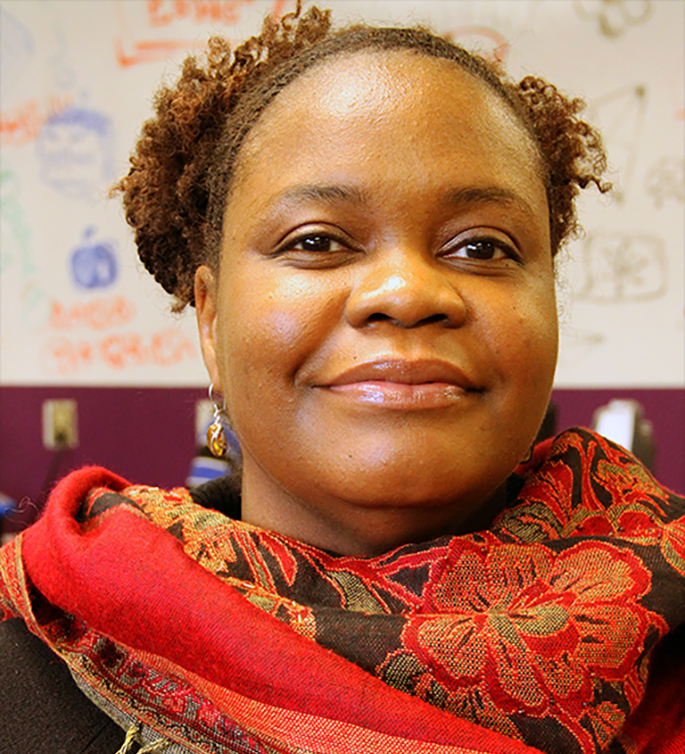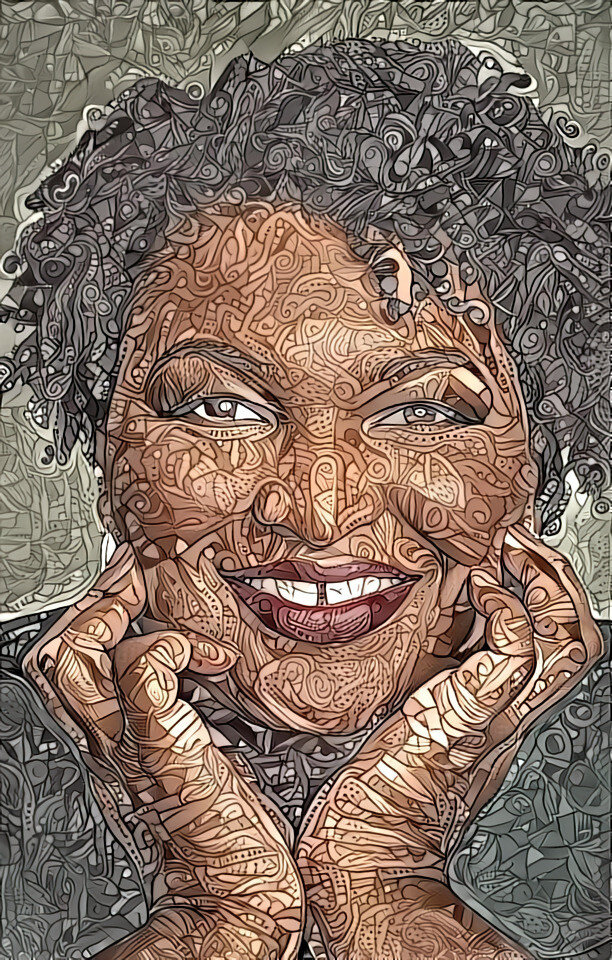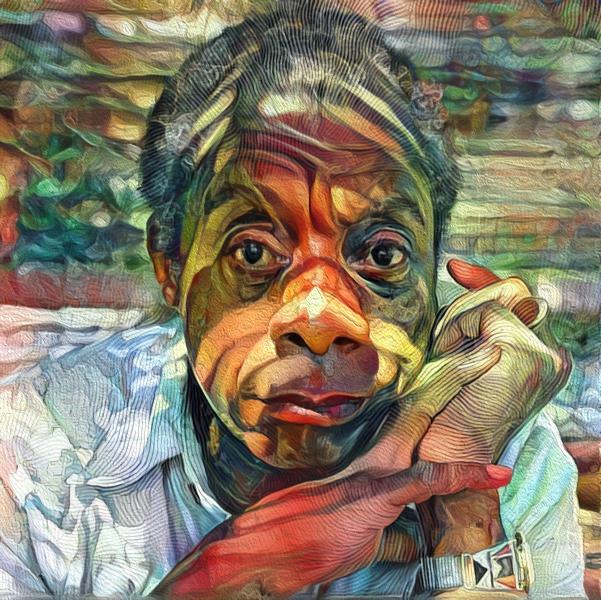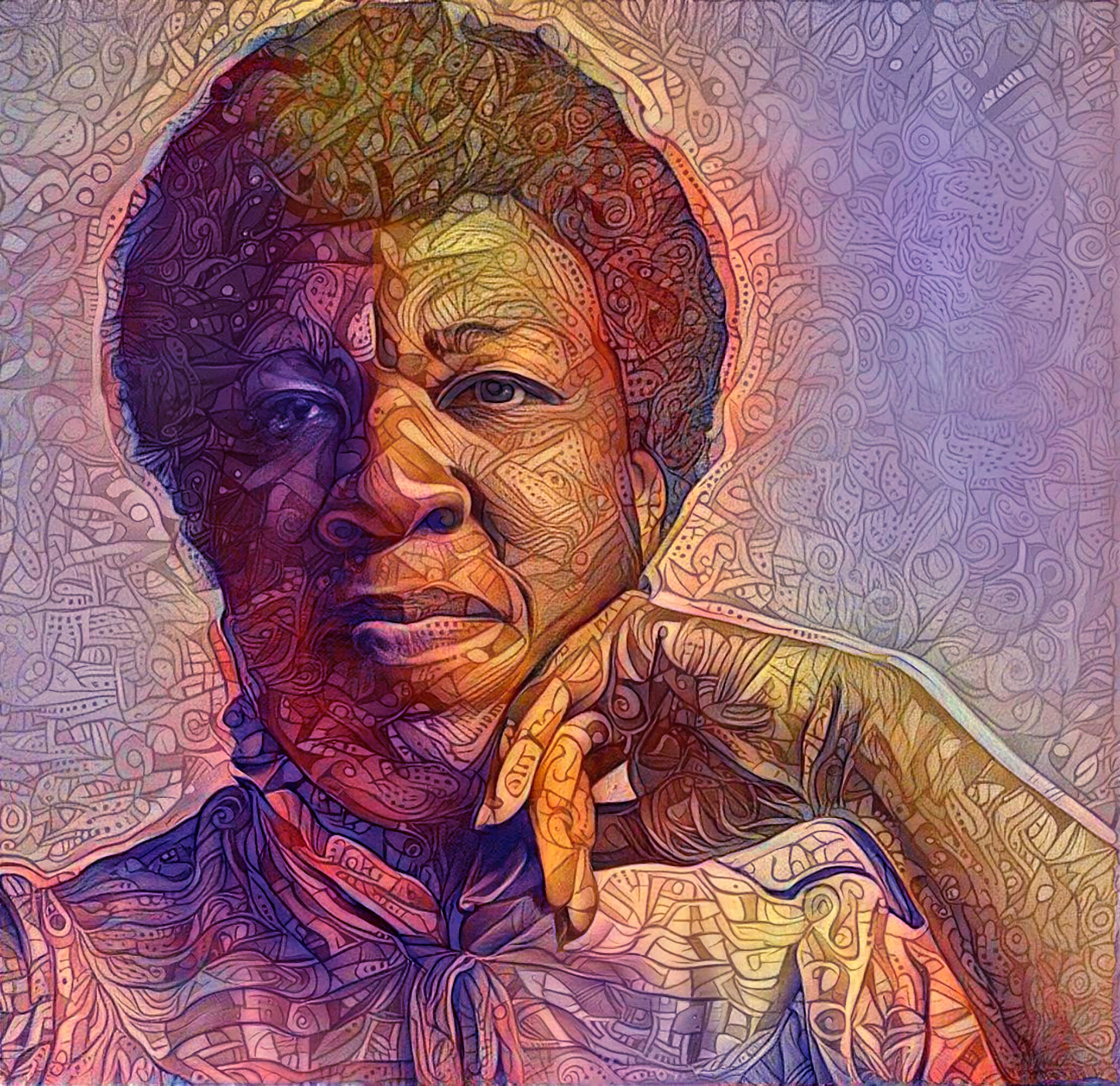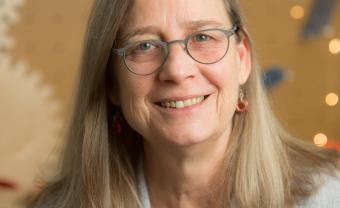In call-and-response, a soloist belts out a line and a choir echoes, a preacher delivers a zinger and the congregation yells “amen.” It’s a mostly musical tradition brought by enslaved Africans to America and through the years it’s been a foundation of spirituals, jazz and hip-hop.
Dr. Nettrice Gaskins isn’t a musician, but she sees her computer-assisted artwork as directly in line with this rich heritage. She uses technology instead of harmony, inputting a photo into a computer app and tinkering with the algorithm to create something totally new, yet still firmly grounded in the original image.
“There’s a call — here’s this content — and then the response is what the machine produces back,” says Nettrice, a digital artist and the assistant director of the Lesley STEAM Learning Lab.
Using technology to make art is something she avoided as a teenager until a high school teacher persuaded her to take a computer graphics class. Although her mother was a computer programmer, a rare job for a Black woman in the 1980s, Nettrice says, “I was reluctant, and actually very doubtful that it would be something I'd be interested in.” She gave it a shot anyway, and the class changed her career trajectory.
“The fact that [my teacher] was able to give me another tool to make art was something that I was really into,” says Nettrice.
Listen to Nettrice in her own words.
Find the transcript.
After high school, she studied computer graphics at the Pratt Institute, received her MFA in art and technology at the School of the Art Institute of Chicago, and earned her PhD in digital media from the Georgia Institute of Technology. Along the way she also discovered a love for education and community service, melding the two through technology and creating opportunities for Black, Indigenous, and People of Color (BIPOC) and female students to access STEAM (science, technology, engineering, art, and math).
Years after her own introduction to computer graphics, Nettrice found herself teaching a group of high school artists an Advanced Placement Computer Science class with an emphasis on art. She discovered an online application that used artificial intelligence to transform images, and in introducing it to her students, reignited her own latent artistic leanings.
In Nettrice’s hands, photographs of Black individuals, such as author James Baldwin, music icon Aretha Franklin and political activist Stacey Abrams, became patterned and technicolored reimaginings of their original portraits—both an echo and something completely new.
“The results were these very distinctive-looking images that people were responding to,” she says.
Nettrice learned how to adjust the program to get the effects she wanted and began selling the images online. But printing them and sticking them in mailers didn’t excite her. Then, during the pandemic, a friend convinced her to try selling her work digitally as NFTs (non-fungible tokens) securely online. Essentially, she could “mint” an image, post it to a blockchain—a record-keeping digital database—and someone could buy it with cryptocurrency. It sounds complicated, but it’s not so different from purchasing a physical image.
Nettrice’s first minted image sold out in 20 minutes. She posted more and those sold out. Within a few weeks, she’d earned $10,000. Originally reluctant to try blockchains due to their carbon footprint, Nettrice found that they actually opened doors to the same demographic of people she’d worked with throughout her career in education. Plus, she could use an eco-friendly online marketplace.
“There are many people who have intersectionally been shut out of the official art market,” she says. By removing the middleman, blockchains have smudged some of the barriers that inhibit the work of many artists, especially BIPOC and women, by giving them the freedom to post their own work and access a large audience.
Once reluctant to use computers, Nettrice now focuses on getting more tech into the hands of BIPOC communities. Debuting this month, her book “Techno-Vernacular Creativity and Innovation: Culturally Relevant Making Inside and Outside of the Classroom” outlines an inclusive and culturally relevant approach to engaging communities that have been historically sidelined from computer science and other STEAM fields.
She puts these concepts into practice at the Lesley STEAM Learning Lab, a hands-on makerspace where education students, teachers, and community partners learn how to engage their students in computer-related education.
“There's this real opportunity to engage many different people,” Nettrice says of both her innovative work and her art. “And if you take the step, other people will take the step, too.”
